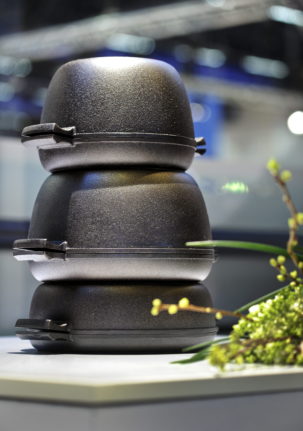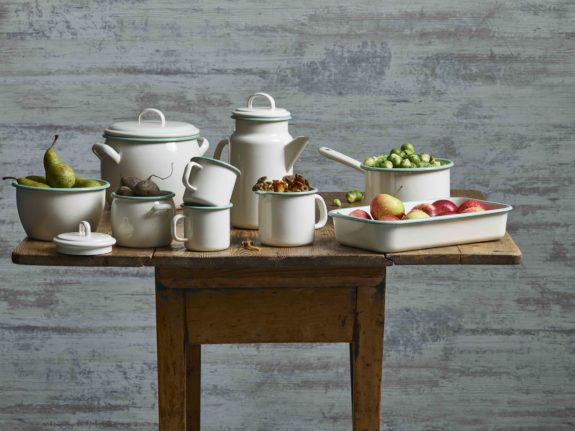Rörstrand
One of Sweden’s most iconic ceramic and porcelain brands, Rörstrand started out making plates about 300 years ago. Generations later, today their collection spans coffee cups, teapots, table linen and adventsbarn, or ‘Advent children’, their advent decorations created in collaboration with famous Swedish designers from across the country.
Some items are affordably priced at just over 100 kronor for an eggcup, tea towel or bowl, while larger items such as teapots or tablecloths sell for over 1,500 kronor. Their products are available at their flagship store in Stockholm or online.
Orrefors Glassware
Orrefors-Kosta Boda has been producing high-quality glass products for over a hundred years now. They use the simplest of raw materials procured from southern Sweden and turn them into beautiful, everyday goods.
Orrefors’ glasses, carafes, bowls and vases are timeless Swedish designs and make for an ideal functional gift for someone who loves elegant glassware.
Prices start at around 400 kronor for glasses, going up to 4,000 kronor for a gold-painted carafe (which happens to be the same carafe used at the Nobel Prize Dinner in Stockholm town hall), both available on Orrefors’ website.
Skeppshult Cast-Iron Cookware
Sweden’s answer to mass-produced kitchenware is Skeppshult’s long lasting, handmade cast iron products. In production since 1906, Skeppshult aims to create environmentally-friendly items from natural and pure raw materials.
Their catalogue includes frying pans, pancake and waffle irons, oven and grill dishes, casseroles, and smaller items like spice grinders and salt and pepper shakers, all available individually and in sets.
They also have interior decorations like Christmas tree stands, candle holders and table coasters. The prices range from a few hundred kronor for smaller items such as salt and pepper grinders to over 2,000 kronor for the largest cast iron pans. Sets cost between 2,500 and 6,000 kronor.
Skeppshult has a factory store in Jönköping and a concept store in Stockholm, as well as an online shop.
Kockums Jernverk
This company was founded by the Kockums family in the 18th century in Ronneby, and started out with manufacturing pots, buckets, and hospital utensils.
They gained recognition thanks to their signature product line of enamelled cookware in 1893, which has now firmly made its mark on Swedish design. Today, Kockum’s designs are characterised by their high-quality and vibrantly colourful range, but their bestseller remains the pale yellow colour lined with a dark green edge, a combination beloved by Swedes.
Kockums took a hit in the 60s thanks to the boom in plastic products, but as the need for sustainability called, with some innovation and the re-introduction of their bestselling designs, Kockums’ sales are booming today.
Their collection boasts of a wide range of iron and steel enamelled utensils and accessories in leather and glass along with a similar line in wooden goods all priced between 40 and 3,300 kronor on their online store.






 Please whitelist us to continue reading.
Please whitelist us to continue reading.
Member comments